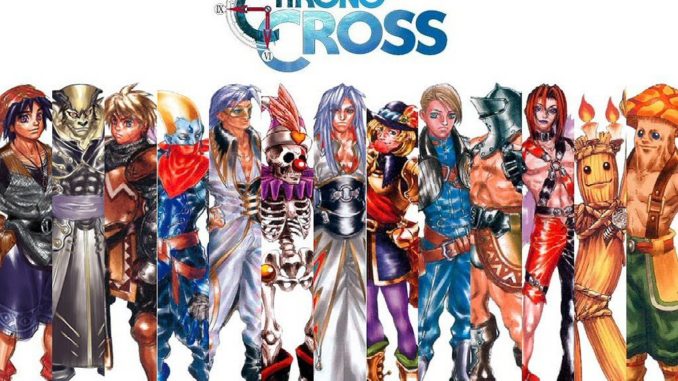
A new month, and a new batch of both vintage and modern games in the library. Recently, having seen the significance of having an abundance of PS1 titles stacked high in the collection, the original Playstation seems to be the go-to system this month. With an extensive role-playing catalog, great survival horror titles, and 32 bit prerendered backdrops that give any modern title today a run for the competition, the PS1 has been one of the sought after titles in the games room. But my collecting for this past month did not stop there, as many more titles were added to the mix from a variety of platforms. This does not necessarily indicate that any of these games are the best IP’s from each platform. This volume is not based on craftsmanship or commercial success. Rather, these are personal picks from the point of view of a collector who seeks to expand his collection regardless of console. Here are just a few of the many titles purchased either by visiting a store or online this past month.
Chrono Cross (PS1, 1999)
While this may not be the spiritual successor everyone hoped for nearly two decades ago, Chrono Cross is still a great artistic achievement on its own and highlights a point in time when the original
Resident Evil 3 Nemesis (PS1, 1999)
With all the hype surrounding the recently released Resident Evil 2 remake, it seems fitting to discuss the last mainline entry on the PS1. In many ways, Resident Evil 3 is the easiest of the original trilogy. Rather than rationing ammo and unlocking secret passageways to progress through the story, RE 3 focuses more on Jill Valentine’s survival in the face of zombie hordes while all along being chased by the monstrous Nemesis throughout the streets of Racoon City. While there are certainly puzzles to solve and clues to unearth, Kazuhiro Aoyama and his team shift the series’ focus to more action-oriented gameplay, with Jill having a machine gun at her disposal rather than a combat knife and pistol. Once again, 3D pre-rendered backdrops are utilized by the game’s developers to present players with an urban horror setting post-T-Virus outbreak. The developers also incorporated a full 180-degree character movement and a dodge mechanic that helped players evade zombies during intense action sequences. Such nuances added a sense of variation that was necessary at the time for the series to evolve and it makes Resident Evil 3 a unique experience on the PS1. Long gone are the narrow corridors and claustrophobic interiors of previous titles in the franchise. Now, the open streets of Racoon City are the house of horror that Jill Valentine must endure.Â
Captain Toad Treasure Tracker (Nintendo Switch, 2018)
Lightening up the tone of recent gaming pickups, Captain Toad Treasure Tracker for the Nintendo Switch is a charming puzzle platformer. With new levels from the Mario Odyssey universe, and a recent DLC update that enables two player coop featuring the titular character’s partner Toadette, this re-release on Nintendo’s current flagship console is loaded with new touches that warrant this rerelease a second playthrough. The game brilliantly utilizes the Switch’s touch screen technology, allowing players to shift the camera a full 360 degrees to reveal hidden areas scattered throughout each level. This is the core mechanic of this puzzle platformer, camera manipulation, and its transition from the gargantuan Wii U pad to the much slimmer Switch interface is brilliant. Unlike other Wii U ports that have a full price tag attached to them, Captain Toad is well worth its forty dollar value.Â
Donkey Kong Country 3: Dixie Kong’s Double Trouble! (SNES, 1996)
After the overwhelming success Rare studios had achieved with its two previous entries in the franchise, Donkey Kong Country 3 almost seemed destined for failure. Fortunately, this was not the case with this third and final entry of the franchise for the Super Nintendo. Both Dixie and Kiddy Kong are the protagonists in this new adventure, with Donkey and Diddy being captured by the evil King K. Rool. Still possessing many of the features of its forebears, such as animal companions, barrel blasting, and bonus stages. But DK 3 is still unique in the fact that its titular characters are completely absent from the crux of the gameplay. Dixie and Kiddy are charming on their own merits and director Tim Stamper masterfully shifting these side characters to the forefront of this final entry. Dixie transitions from being a sidekick to the actual rescuer of the legendary Donkey Kong for which the game still bears his moniker. The animal friends are still present but some new helpers appear in each stage such as Ellie The Elephant and Parry the Parallel Bird. All this combines to give players a singular adventure rather than an extension of everything that came before.Â
Indigo Prophecy (
Director David Cage developed one of the most unique experiences ever to grace the PS2 during its initial lifespan with the release of Indigo Prophecy. Centered around the themes of memories and murder conspiracy, the plot of the game is pretty much run of the mill when it comes to a who really did it story arc. But it’s not the destination that counts by the journey that truly determines the greatness of a story arc. Cage and his team definitely redefined the limits of storytelling in the video game medium with this Atari published product. Quick time events become the center of this game’s mechanic, with players having to utilize the twin analog control sticks on their PS 2 remotes to respond to triggered sequences during action segments of the game. With the left stick controlling the movements of your character and the right handling context sensitive motions, Indigo Prophecy did away with the traditional control patterns that pervaded gaming history. But besides that, the game is most noted for its large scale action framing sequences that, based upon player’s decisions, progress the story into various branching story arcs that affect the overall finality of the plot. The director of the game forces players to choose the trajectory of their journey and not just go along with it like most other titles. Indigo Prophecy is built around this multitude of branching pathways and text-heavy NPC interactions that elevate the murder mystery genre from a mere guessing game to epic storytelling. Featuring all the pathos of a Dashiell Hammet novel, Indigo Prophecy symbolizes the unity of nuances gaming mechanics with multilayered plot structure.Â


Leave a Reply